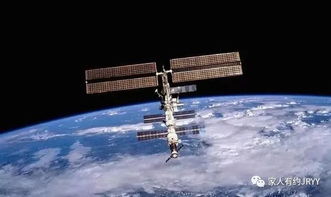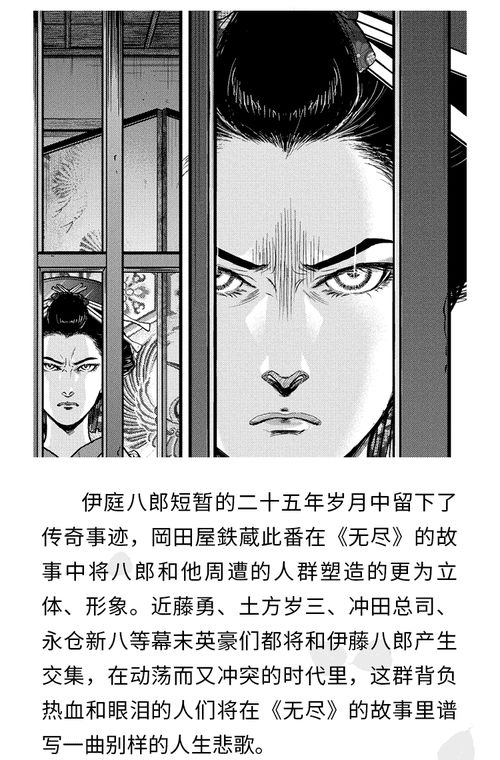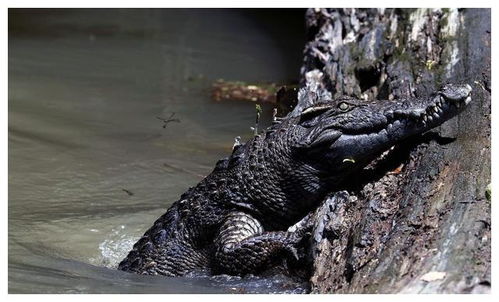专家告诫NASA的宁静遭到扰乱,要求对空间站翻转变乱举行独自观察
2022-11-18 09:35:42 作者:如何做妳唯壹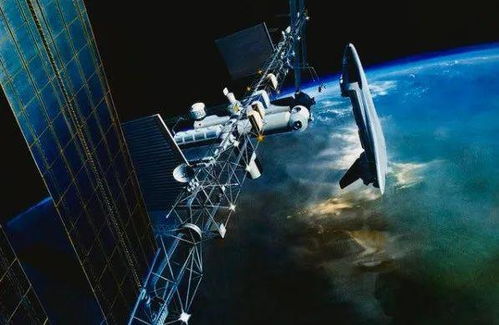
泉源IEEE Spectrum,本文以双语较对情势公布
This is a guest post. The views expressed here are solely those of the author and do not represent positions of IEEE Spectrum or the IEEE.
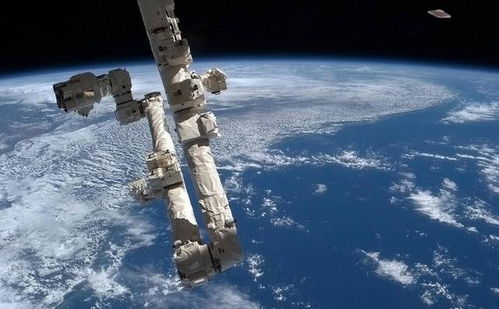
In an International Space Station major milestone more than fifteen years in the making, a long-delayed Russian science laboratory named Nauka automatically docked to the station on 29 July, prompting sighs of relief in the Mission Control Centers in Houston and Moscow. But within a few hours, it became shockingly obvious the celebrations were premature, and the ISS was coming closer to disaster than at anytime in its nearly 25 years in orbit.
While the proximate cause of the incident is still being unravelled, there are worrisome signs that NASA may be repeating some of the lapses that lead to the loss of the Challenger and Columbia space shuttles and their crews. And because political pressures seem to be driving much of the problem, only an independent investigation with serious political heft can reverse any erosion in safety culture.
Let's step back and look at what we know happened: In a cyber-logical process still not entirely clear, while passing northwest to southeast over Indonesia, the Nauka module's autopilot apparently decided it was supposed to fly away from the station. Although actually attached, and with the latches on the station side closed, the module began trying to line itself up in preparation to fire its main engines using an attitude adjustment thruster. As the thruster fired, the entire station was slowly dragged askew as well.
Since the ISS was well beyond the coverage of Russian ground stations, and since the world-wide Soviet-era fleet of tracking ships and world-circling network of "Luch" relay comsats had long since been scrapped, and replacements were slow in coming, nobody even knew Nauka was firing its thruster, until a slight but growing shift in the ISS's orientation was finally detected by NASA.
这是一篇客座文章。这里表达的看法仅代表作者的看法,并不代表IEEE Spectrum或IEEE的态度。
在国际空间站15年多来的一个庞大里程碑中,一个耽搁已久的俄罗斯科学试验室诺卡(Nauka)于7月29日主动对接空间站,这让休斯顿和莫斯科的使命操纵中间松了一口吻。但在几个小时内,令人震惊的是,庆贺运动为时过早,国际空间站比其在轨道上近25年的任何时间都更靠近灾祸。
固然变乱的直接缘故原由仍未查明,但有令人担心的迹象评释,美国国度航空航天局(NASA)大概正在重复导致挑衅者号(Challenger)和哥伦比亚号(Columbia)航天飞机及其机组职员失落的一些失误。因为政治压力彷佛在很大水平上推动了题目的办理,只有具有严峻政治影响力的独立观察才气旋转宁静文化的任何腐蚀。
让我们退却一步,看看我们知道产生了什么:在一个尚不完全清晰的网络规律历程中,当Nauka模块从西北向东南飞越印度尼西亚上空时,Nauka模块的主动驾驶仪明显决定它应该飞离空间站。固然现实上是连在一路的,并且空间站一侧的门闩封闭了,但模块开始实验将本身排成一列,预备利用姿态调解推进器点燃主发动机。随着推进器的放射,整个空间站也逐步地被歪斜地拖着。
因为国际空间站远远凌驾了俄罗斯地面站的笼罩范畴,并且苏联期间笼罩环球的跟踪船舰队和“路奇”中继站环游天下的网络早已报废,调换的卫星也来得很慢,乃至没有人知道瑙卡正在放射推进器,直到NASA终极探测到国际空间站的偏向产生了轻细但不停扩大的变化。
Within minutes, the Flight Director in Houston declared a "spacecraft emergency"—the first in the station's lifetime—and his team tried to figure out what could be done to avoid the ISS spinning up so fast that structural damage could result. The football-field-sized array of pressurized modules, support girders, solar arrays, radiator panels, robotic arms, and other mechanisms was designed to operate in a weightless environment. But it was also built to handle stresses both from directional thrusting (used to boost the altitude periodically) and rotational torques (usually to maintain a horizon-level orientation, or to turn to a specific different orientation to facilitate arrival or departure of visiting vehicles). The juncture latches that held the ISS's module together had been sized to accommodate these forces with a comfortable safety margin, but a maneuver of this scale had never been expected.
Meanwhile, the station's automated attitude control system had also noted the deviation and began firing other thrusters to countermand it. These too were on the Russian half of the station. The only US orientation-control system is a set of spinning flywheels that gently turn the structure without the need for thruster propellant, but which would have been unable to cope with the unrelenting push of Nauka's thruster. Later mass-media scenarios depicted teams of specialists manually directing on-board systems into action, but the exact actions taken in response still remain unclear—and probably were mostly if not entirely automatic. The drama continued as the station crossed the Pacific, then South America and the mid-Atlantic, finally entering Russian radio contact over central Europe an hour after the crisis had begun. By then the thrusting had stopped, probably when the guilty thruster exhausted its fuel supply. The sane half of the Russian segment then restored the desired station orientation.
Initial private attempts to use telemetry data to visually represent the station's tumble that were posted online looked bizarre, with enormous rapid gyrations in different directions. Mercifully, the truth of the situation is that the ISS went through a simple long-axis spin of one and a half full turns, and then a half turn back to the starting alignment. The jumps and zig-zags were computational artifacts of the representational schemes used by NASA, which relate to the concept of "gimbal lock" in gyroscopes.
How close the station had come to disaster is an open question, and the flight director humorously alluded to it in a later tweet that he'd never been so happy as when he saw on external TV cameras that the solar arrays and radiators were still standing straight in place. And any excessive bending stress along docking interfaces between the Russian and American segments would have demanded quick leak checks. But even if the rotation was "simple," the undeniably dramatic event has both short term and long-term significance for the future of the space station. And it has antecedents dating back to the very birth of the ISS in 1997.
几分钟后,休斯顿的飞行主管公布进入“航天器告急状态”--这是空间站有生以来的第一次--他的团队试图找出可以做些什么,以幸免国际空间站过快扭转,从而导致布局破坏。足球场巨细的加压模块、支持梁、太阳能电池板、散热器面板、机器臂和其他机器装置构成的阵列被设计成在失重情况下运行。但它的建筑也是为了应对来自定向推力(用于定期进步高度)和扭转扭矩(通常用于连结地平线偏向,或转向特定的差别偏向,以便利来访车辆的到达或脱离)的压力。将国际空间站的模块毗连在一路的毗连锁扣的巨细可以容纳这些气力,并具有安宁的宁静裕度,但从来没有想到会有云云范围的机动。
与此同时,空间站的主动姿态操纵体系也细致到了毛病,并开始放射其他推进器来抵消毛病。这些也在空间站的俄罗斯豆剖瓜分上。美国唯一的定向操纵体系是一组扭转的飞轮,它们可以在不必要推进器推进剂的情形下轻轻转动布局,但无法应对Nauka推进器的无情推动。厥后的大众媒体场景形貌了专家团队手动指挥机载体系接纳举措,但接纳的详细举措仍不清晰-并且很大概大部门(假如不是完全主动的话)是主动的。在危急开始一小时后,该电台高出平静洋,然后是南美和大泰西中部,终极在中欧上空进入俄罗斯的无线电联络,这一戏剧性变乱仍在陆续。到当时,推进器的推进已经制止,大概是由于有罪的推进器耗尽了燃料提供。然后,俄罗斯部门的一半理智的人规复了所需的空间站偏向。
最初的私家实验利用遥测数据来直观地出现空间站的坠落情形,并公布在网上,看起来很惊奇,在差别的偏向上显现了庞大的快速扭转。荣幸的是,情形的实情是,国际空间站履历了一个简洁的长轴扭转,全转一圈半,然后半圈回到肇始对齐。跳跃和之字形是NASA利用的表象方案的盘算产品,这与陀螺仪中的“万向节锁”观点有关。
空间站离灾祸有多近照旧个悬而未决的题目,飞行主管在厥后的一条推文中诙谐地表示,当他在外部电视摄像机上看到太阳能电池板和散热器仍旧建立在得当的位置时,他从未像如今如许快乐。在俄罗斯和美国船段之间的对接界面上,任何过大的弯曲应力都必要敏捷举行走漏查抄。但是,纵然扭转是“简洁的”,不行否定,这一戏剧性的变乱对空间站的将来既有短期意义,也有恒久意义。它的汗青可以追溯到1997年国际空间站诞生之时。
How close the ISS had come to disaster is still an open question.
At this point, unfortunately, is when the human misjudgments began to surface. To calm things down, official NASA spokesmen provided very preliminary underestimates in how big and how fast the station's spin had been. These were presented without any caveat that the numbers were unverified—and the real figures turned out to be much worse. The Russian side, for its part, dismissed the attitude deviation as a routine bump in a normal process of automatic docking and proclaimed there would be no formal incident investigation, especially any that would involve their American partners. Indeed, both sides seemed to agree that the sooner the incident was forgotten, the better. As of now, the US side is deep into analysis of induced stresses on critical ISS structures, with the most important ones, such as the solar arrays, first. Another standard procedure after this kind of event is to assess potential indicators of stress-induced damage, especially in terms of air leaks, and where best to monitor cabin pressure and other parameters to detect any such leaks.
The bureaucratic instinct to minimize the described potential severity of the event needs cold-blooded assessment. Sadly, from past experience, this mindset of complacency and hoping for the best is the result of natural human mental drift that comes when there are long periods of apparent normalcy. Even if there is a slowly emerging problem, as long as everything looks okay in the day to day, the tendency is ignore warning signals as minor perturbations. The safety of the system is assumed rather than verified—and consequently managers are led into missing clues, or making careless choices, that lead to disaster. So these recent indications of this mental attitude about the station's attitude are worrisome. The NASA team has experienced that same slow cultural rot of assuming safety several times over the past decades, with hideous consequences. Team members in the year leading up to the 1986 Challenger disaster (and I was deep within the Mission Control operations then) had noticed and begun voicing concerns over growing carelessness and even humorous reactions to occasional "stupid mistakes," without effect. Then, after imprudent management decisions, seven people died.
The same drift was noticed in the late 1990s, especially in the joint US/Russian operations on Mir and on early ISS flights. It led to the forced departure of a number of top NASA officials, who had objected to the trend that was being imposed by the White House's post-Cold War diplomatic goals, implemented by NASA Administrator Dan Goldin. Safety took a decidedly secondary priority to international diplomatic value. Legendary Mission Control leader Gene Kranz described the decisions that were made in the mid-1990s over his own objections, objections that led to his sudden departure from NASA. "Russia was subsequently assigned partnership responsibilities for critical in-line tasks with minimal concern for the political and technical difficulties as well as the cost and schedule risks," he wrote in 1999. "This was the first time in the history of US manned space flight that NASA assigned critical path, in-line tasks with little or no backup." By 2001-'02, the results were as Kranz and his colleagues had warned. "Today's problems with the space station are the product of a program driven by an overriding political objective and developed by an ad hoc committee, which bypassed NASA's proven management and engineering teams," he concluded.
国际空间站离灾祸有多近还是一个悬而未决的题目。
不幸的是,在这一点上,人类的误判开始浮出水面。为了停顿局势,NASA的官方发言人对空间站的自转有多大和多快提供了非常开端的低估。这些数字没有任何告诫,这些数字是未经核实的-而真实的数字厥后被证明要糟糕得多。俄方则对这种态度毛病不屑一顾,以为这是正常的主动对接历程中的官样文章,并公布不会举行正式的变乱观察,格外是任何涉及他们的美国互助同伴的变乱。究竟上,两边彷佛都同意,这一变乱越早被忘记越好。到现在为止,美方正在深入阐发国际空间站要害布局的诱导应力,起首阐发最紧张的布局,如太阳能电池板。这类变乱后的另一个尺度步伐是评估压力引起的侵害的潜伏指标,格外是在氛围走漏方面,并最好监测机舱压力和其他参数,以检测任何此类走漏。
将所形貌的变乱潜伏严峻性降至最低的权要本能必要冷血评估。可悲的是,从已往的履历来看,这种得意和盼望最好的心态是人类精力天然漂移的效果,这种漂移是在很长一段时间内外貌上的正常状态下显现的。纵然有一个迟钝显现的题目,只要每天看起来统统正常,偏向于纰漏告诫信号,将其视为微小的滋扰。体系的宁静性是假设的,而不是验证的-是以,治理者被指导到漏掉线索,或做出导致灾祸的粗心大意的选择。是以,近来这些迹象评释,人们对空间站的态度持这种心态,这令人担心。在已往的几十年里,NASA团队履历了同样的迟钝的假设宁静的文化腐败,带来了可骇的结果。在1986年挑衅者号灾祸之前的一年里,团队成员(其时我正深入使命操纵中间的举措)已经细致到,并开始对日益增进的粗心大意表现担心,乃至开始对间或显现的“愚笨错误”做出诙谐的反响,但都没有用果。然后,在做出草率的治理决议计划后,有7人去世亡。
20世纪90年月末也细致到了同样的漂移,格外是在美俄在宁静号和国际空间站早期飞行的团结举措中。这导致一些NASA高级官员被迫去职,他们阻挡由NASA局长丹·戈尔丁(Dan Goldin)实行的白宫暗斗后交际目的强加的趋向。与国际交际代价相比,宁静明显是次要的。传奇的使命操纵中间向导人吉恩·克兰兹形貌了20世纪90年月中期做出的决定,这些决定是因为他本身的阻挡而做出的,这些阻挡导致他忽然脱离美国国度航空航天局(NASA)。他在1999年写道:“俄罗斯随后被指派卖力要害的联动使命,对政治和技能困难以及本钱和进度危险的担心微乎其微。”“这是美国载人航天汗青上美国国度航空航天局(NASA)初次安排要害路径,在险些没有后备的情形下完成串联使命。”到了2001-02年,效果正如克兰兹和他的同事们所告诫的那样。他总结道:“今日空间站的题目是一个由压服统统的政治目的驱动的项目标产品,这个项目是由一个格外委员会订定的,这个项目绕过了NASA久经磨练的治理和工程团队。”
To reverse the apparent new cultural drift, NASA headquarters or some even higher office is going to have to intervene.
By then the warped NASA management culture that soon enabled the Columbia disaster in 2003 was fully in place. Some of the wording in current management proclamations regarding the Nauka docking have an eerie ring of familiarity. "Space cooperation continues to be a hallmark of U.S.-Russian relations and I have no doubt that our joint work reinforces the ties that have bound our collaborative efforts over the many years" wrote NASA Director Bill Nelson to Dmitry Rogozin, head of the Russian space agency, on July 31. There was no mention of the ISS's first declared spacecraft emergency, nor any dissatisfaction with Russian contribution to it.
To reverse the apparent new cultural drift, and thus potentially forestall the same kind of dismal results as before, NASA headquarters or some even higher office is going to have to intervene. The causes of the Nauka-induced "space sumo match" of massive cross-pushing bodies need to be determined and verified. And somebody needs to expose the decision process that allowed NASA to approve the ISS docking of a powerful thruster-equipped module without the on-site real-time capability to quickly disarm that system in an emergency. Because the apparent sloppiness of NASA's safety oversight on visiting vehicles looks to be directly associated with maintaining good relations with Moscow, the driving factor seems to be White House diplomatic goals—and that's the level where a corrective impetus must originate. With a long-time U.S. Senate colleague, Nelson, recently named head of NASA, President Biden is well connected to issue such guidance for a thorough investigation by an independent commission, followed by implementation of needed reforms. The buck stops with him.
As far as Nauka's role in this process of safety-culture repair, it turns out that quite by bizarre coincidence, a similar pattern was played out by the very first Russian launch that inaugurated the ISS program, the 'Zarya' module [called the 'FGB'] in late 1997. Nauka turns out to be the repeatedly rebuilt and upgraded backup module for that very launch, and the parallels are remarkable. The day the FGB was launched, on 23 November 1997, the mission faced disaster when it refused to accept ground commands to raise its original atmosphere-skimming parking orbit. As it crossed over Russian ground sites, controllers in Moscow sent commands, and the spacecraft didn't answer. Meanwhile, NASA guests at a nearby facility were celebrating with Russian colleagues as nobody told them of the crisis. Finally, on the last available in-range pass, controllers tried a new command format that the onboard computer did recognize and acknowledge. The mission—and the entire ISS project—was saved, and the American side never knew. Only years later did the story appear in Russian newspapers.
Still, for all its messy difficulties and frustrating disappointments, the U.S./Russian partnership turned out to be a remarkably robust "mutual co-dependence" arrangement, when managed with "tough love." Neither side really had practical alternatives if it wanted a permanent human presence in space, and they still don't—so both teams were devoted to making it work. And it could still work—if NASA keeps faith with its traditional safety culture and with the lives of those astronauts who died in the past because NASA had failed them.
为了旋转这种显着的新文化潮水,NASA总部或其他更高级另外办公室将不得不参与。
到当时,扭曲的NASA治理文化已经完全到位,这种文化很快就导致了2003年的哥伦比亚灾祸。现在治理层声明中关于Nauka对接的一些说话有一种令人不寒而栗的似曾相识的觉得。7月31日,NASA局长比尔·纳尔逊(Bill Nelson)在给俄罗斯航天局局长德米特里·罗戈津(Dmitry Rogozin)的信中写道:“太空互助仍旧是美俄干系的一个标记,我绝不猜疑,我们的团结事情增强了多年来束缚我们互助高兴的联络。”没有提到国际空间站第一次公布航天器进入告急状态,也没有对俄罗斯对此做出的奉献表现任何不满。
为了旋转这种显着的新文化潮水,从而有大概防备显现与曩昔一样的昏暗效果,NASA总部或其他更高级另外办公室将不得不举行干涉。Nauka激发的大范围交织推进体“太空相扑竞赛”的缘故原由有待确定和验证。有人必要揭破如许的决议计划历程,即许可NASA答应国际空间站对接一个壮大的推进器装备的模块,而没有现场及时本领在告急情形下快速排除该体系的武装。因为美国国度航空航天局(NASA)对来访车辆的宁静监视显着敷衍,看起来与与莫斯科连结精良干系直接相干,是以驱动身分彷佛是白宫的交际目的--而这正是改正的动力一定源自的程度。拜登总统与美国商讨院的恒久同事纳尔逊(Nelson)近来被任命为美国国度航空航天局(NASA)局长,他与公布如许的引导定见干系紧密,以便由一个独立委员会举行彻底观察,然后实行须要的革新。责任由他负担。
就Nauka在这一宁静文化修复历程中所饰演的脚色而言,惊奇的偶合是,1997年底,俄罗斯初次启动国际空间站打算的“扎里亚”(Zarya)模块(称为“FGB”)也体现出了雷同的模式。Nauka被证明是那次放射的重复重修和升级的备份模块,其相似之处令人惊讶。1997年11月23日,在FGB放射确当天,使命面对灾祸,由于它拒绝担当地面下令,进步其最初的掠过大气层的停车轨道。当飞船飞越俄罗斯地面时,莫斯科的管束员发出了下令,但航天器没有回应。与此同时,美国国度航空航天局(NASA)的客人在周边的一个办法与俄罗斯同事一路庆贺,由于没有人报告他们这场危急。最终,在最终一次可用射程内,操纵器实验了一种新的下令款式,机载盘算机的确辨认并确认了该款式。这项使命--以及整个国际空间站项目--解围了,而美方一向不知道。直到几年后,这个故事才显现在俄罗斯的报纸上。
只管云云,只管困难重重,令人沮丧,但究竟证明,美俄同伴干系在以“严峻的爱”治理的情形下,是一种非常牢固的“相互依存”的摆设。假如两边想要人类在太空中永远存在,两边都没有现实的选择,他们如今仍旧没有-以是两个团队都致力于实现这一目的。假如美国国度航空航天局(NASA)信守其传统的宁静文化,并信赖那些已往因NASA辜负了他们而去世亡的宇航员的生命,它仍旧可以发挥作用。
Postscript: As this story was going to press, a NASA spokesperson responded to queries about the incident saying:
As shared by NASA's Kathy Lueders and Joel Montalbano in the media telecon following the event, Roscosmos regularly updated NASA and the rest of the international partners on MLM's progress during the approach to station. We continue to have confidence in our partnership with Roscosmos to operate the International Space Station. When the unexpected thruster firings occurred, flight control teams were able to enact contingency procedures and return the station to normal operations within an hour. We would point you to Roscosmos for any specifics on Russian systems/performance/procedures.
跋文:在这篇报道马上颁发之际,NASA的一位发言人在答复有关这一变乱的提问时表现:
正如NASA的Kathy Lueders和Joel Montalbano在运动后的媒体德律风集会上分享的那样,Roscosmos定期向NASA和其他国际互助同伴转达传销在靠近空间站时期的希望情形。我们陆续对我们与俄罗斯航天局互助运营国际空间站满盈信念。当不测的推进器放射产生时,飞行操纵小组可以或许订定应急步伐,并在一小时内使空间站规复正常运行。有关俄罗斯体系/性能/步伐的任何细节,我们会向您推举俄罗斯宇宙飞船公司(Roscosmos)。
